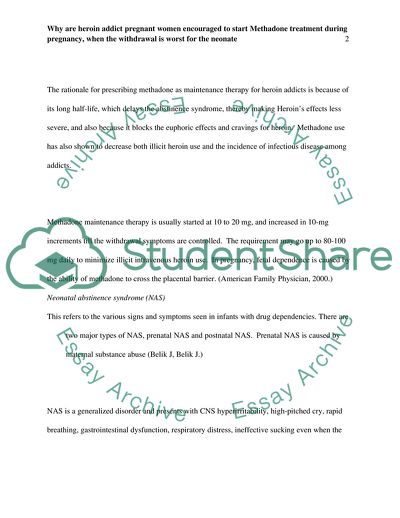Cite this document
(Methadone Treatment during Pregnancy Assignment, n.d.)
Methadone Treatment during Pregnancy Assignment. https://studentshare.org/health-sciences-medicine/1702937-why-are-heroin-addict-pregnant-women-encouraged-to-start-methodone-treatment-during-pregnancy-when-the-withdrawal-is-worst-for-the-neonate-than-heroin
Methadone Treatment during Pregnancy Assignment. https://studentshare.org/health-sciences-medicine/1702937-why-are-heroin-addict-pregnant-women-encouraged-to-start-methodone-treatment-during-pregnancy-when-the-withdrawal-is-worst-for-the-neonate-than-heroin
(Methadone Treatment During Pregnancy Assignment)
Methadone Treatment During Pregnancy Assignment. https://studentshare.org/health-sciences-medicine/1702937-why-are-heroin-addict-pregnant-women-encouraged-to-start-methodone-treatment-during-pregnancy-when-the-withdrawal-is-worst-for-the-neonate-than-heroin.
Methadone Treatment During Pregnancy Assignment. https://studentshare.org/health-sciences-medicine/1702937-why-are-heroin-addict-pregnant-women-encouraged-to-start-methodone-treatment-during-pregnancy-when-the-withdrawal-is-worst-for-the-neonate-than-heroin.
“Methadone Treatment During Pregnancy Assignment”. https://studentshare.org/health-sciences-medicine/1702937-why-are-heroin-addict-pregnant-women-encouraged-to-start-methodone-treatment-during-pregnancy-when-the-withdrawal-is-worst-for-the-neonate-than-heroin.


